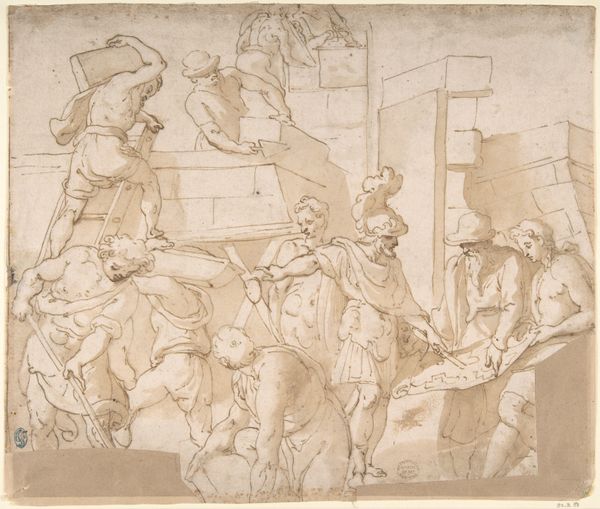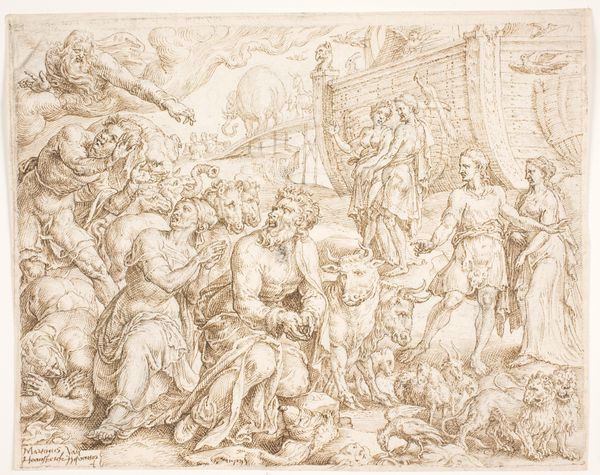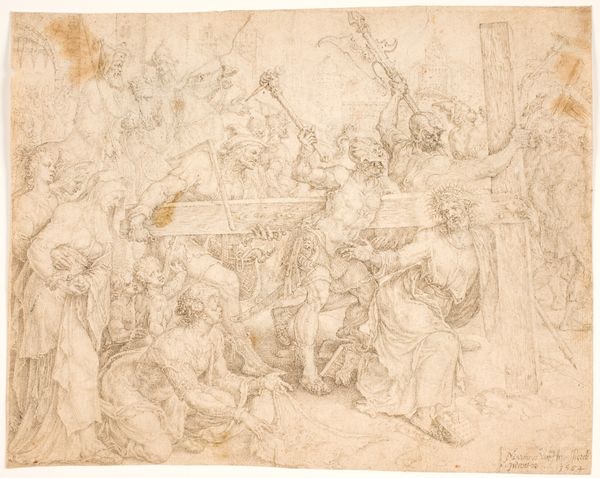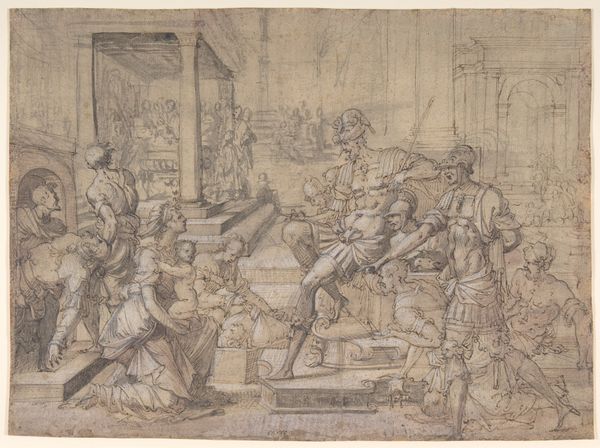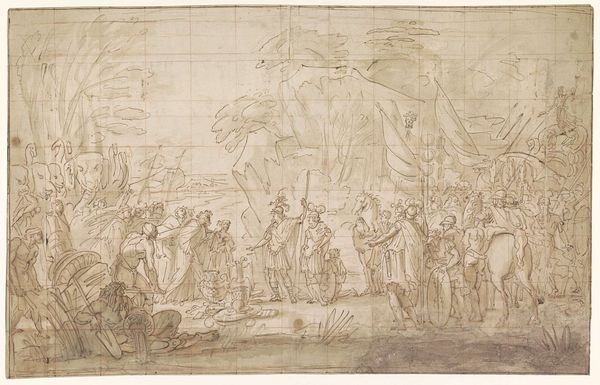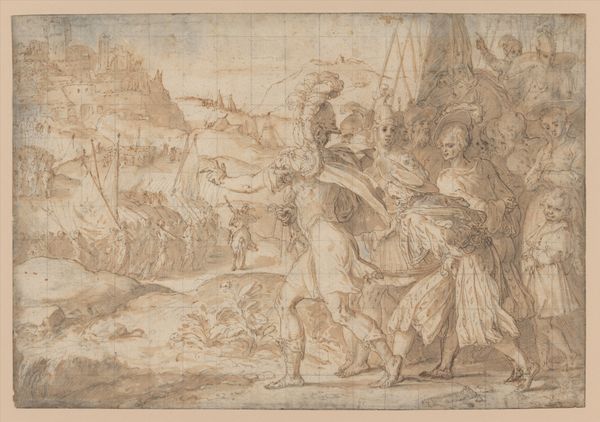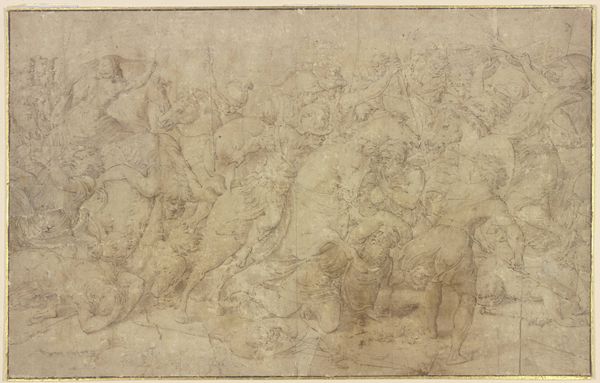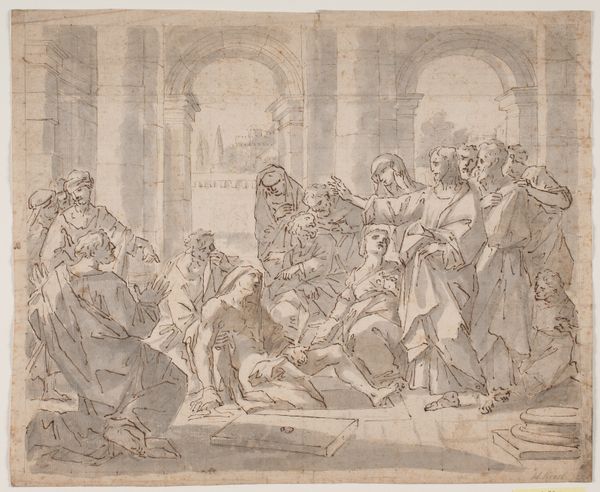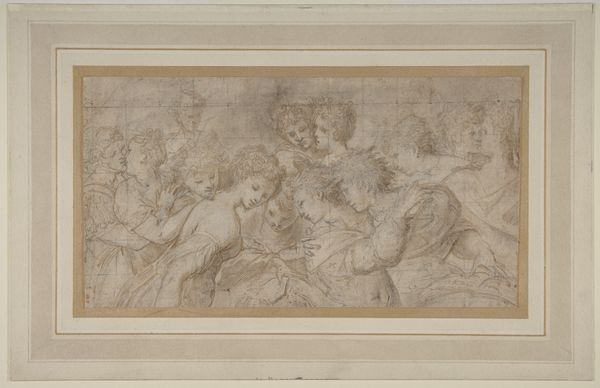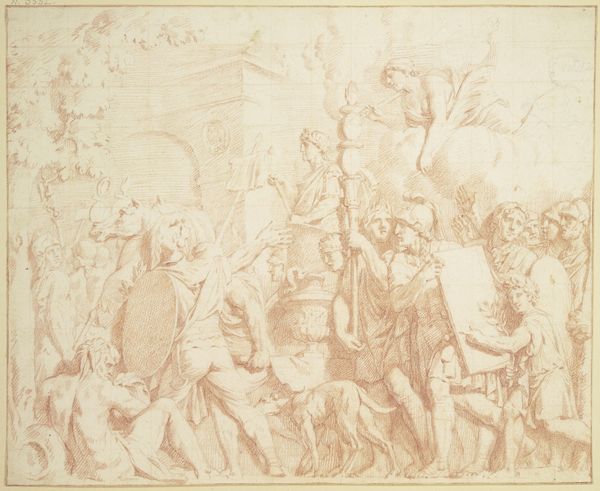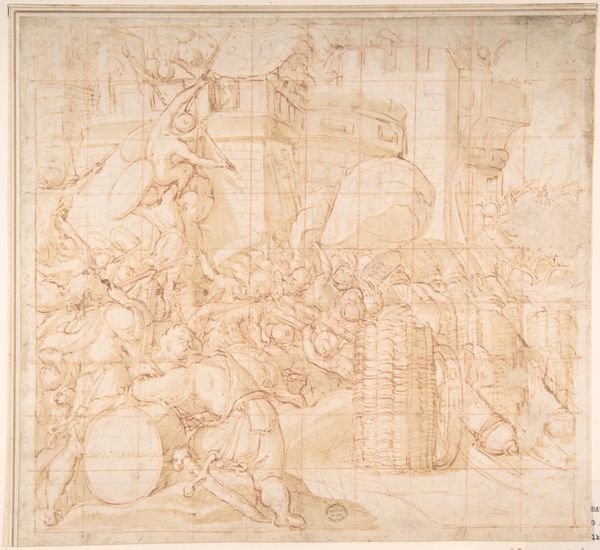
drawing, print, paper, ink
#
drawing
#
narrative-art
#
baroque
#
ink painting
# print
#
charcoal drawing
#
figuration
#
paper
#
ink
#
genre-painting
#
history-painting
#
italian-renaissance
Dimensions: 11 1/4 x 14 1/8in. (28.5 x 35.9cm)
Copyright: Public Domain
Curator: Take a moment to observe this drawing, "Old Testament Scene," created between 1639 and 1697 by Giovanni Andrea Carlone. It’s a wonderful example of Baroque figuration on paper with ink. Editor: My first thought is, wow, there's so much energy. It feels unfinished but also purposeful in its raw, sketched form. You can practically feel the artist's hand moving across the page. Curator: Indeed. Carlone likely conceived this as a preparatory sketch. Consider the institutional demands placed upon artists of the era, particularly for large-scale history paintings or frescoes commissioned by religious institutions. The rapid execution was critical to securing and managing prominent commissions. Editor: I'm struck by the grid underneath, the way the ink sits upon the page. The varying line weights must be planned, a clear construction with ink wash. It’s amazing how such basic materials can convey such depth and narrative richness, all while revealing its process. It makes you consider what type of ink Carlone was using; who made it? Curator: Those construction lines would definitely assist in the proportional transfer to a larger canvas. And I agree; he masterfully stages the figures, drawing the viewer's eye toward the central figures in a way that communicates the painting's primary religious, likely propagandistic, purpose. Editor: Propagandistic how? I am curious to hear more about this claim. Curator: By depicting an Old Testament scene with dramatic flair and clear hierarchies, Carlone participates in the broader cultural project of the Catholic Church. Artists worked as vehicles to tell religious narratives and underscore messages of faith and divine authority. Editor: Absolutely, though when you get down to it, ink wasn't merely a passive medium, but an active participant in these cultural narratives. The ingredients, production, distribution, these factors speak volumes about the broader social landscape and consumer appetites. Curator: Ultimately, analyzing “Old Testament Scene” invites us to appreciate not just Carlone's artistic ability but also the intricate historical and cultural contexts that shape artistic creation. Editor: Exactly! For me, appreciating its process allows us to grasp a more comprehensive idea about materiality, labor and socio-economic patterns that constitute this magnificent drawing.
Comments
No comments
Be the first to comment and join the conversation on the ultimate creative platform.

